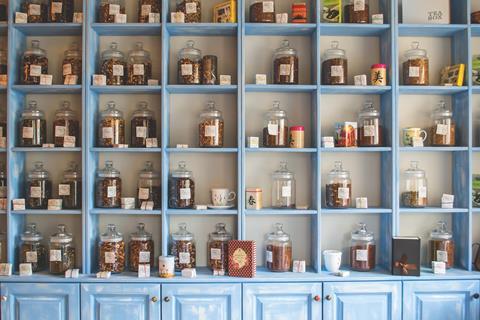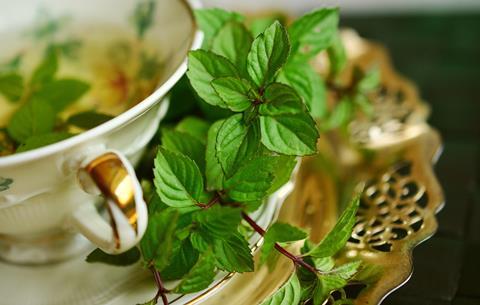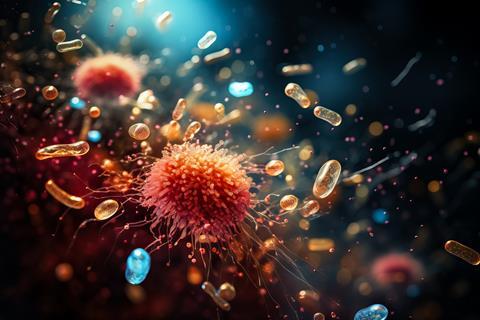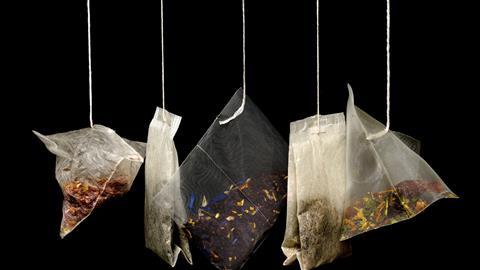In the contemporary landscape of healthcare, alternative medicine emerges as a compelling paradigm shift away from the conventional disease-centric approach of allopathic medicine. Embracing holistic principles, alternative medicine places a premium on the comprehensive well-being of individuals, utilizing a diverse array of techniques ranging from acupuncture and Reiki to meditation and herbal supplementation. These modalities work in harmony to awaken the body’s innate capacity for self-healing, marking a departure from the symptomatic treatment often associated with allopathic practices
Herbal medicine: nurturing health through nature’s bounty
Herbal medicine, an integral facet of human healthcare since prehistoric times, harnesses the healing properties of botanicals and herbs. Revered across cultures and civilizations, herbal remedies have been lauded for their diverse therapeutic effects, spanning ancient Chinese, Greek, Egyptian, Indian, Native American, and African medicinal traditions. Among the plethora of alternative medical systems, Ayurveda, which translates to ‘The Science of life’ in Sanskrit is an ancient Indian practice, that occupies a significant position for its emphasis on preventing suffering and fostering enduring health through natural resources. With roots extending back to the Pre-Vedic periods (4000 B.C. – 1500 B.C.), Ayurveda has been transmitted across generations primarily through oral tradition, emphasizing holistic principles of balance and harmony.
Available in various forms, including dried, minced, powdered, or encapsulated formulations, herbal medicines offer versatile options for consumption. Furthermore, herbal teas can be crafted from a diverse array of botanicals, surpassing all beverages save water in global consumption. While our understanding of the precise mechanisms behind the effects of herbal teas remains a work in progress, contemporary research offers tantalizing glimpses into the pharmacological activities of the bioactive constituents found within these aromatic brews. Additionally, given that over 80% of the world’s population still relies on traditional medicine, and as around 40% of pharmaceutical products today draw from nature and natural knowledge, it is imperative to explore the mechanisms by which herbal medicine contributes to health and wellness.

Exploring herbal phytochemicals and their benefits
Herbal bioactive compounds, often referred to as phytochemicals, comprise a rich tapestry of molecular diversity found abundantly in plants . Ranging from saponins and tannins to alkaloids, flavonoids, and terpenoids, these compounds arm herbs with a multifaceted pharmacological arsenal. Take, for instance, Arjuna, a revered medicinal herb renowned for its cardiovascular benefits. Within its botanical embrace lie bioactive saponin glycosides, instrumental in enhancing cardiac muscle function, alongside flavonoids that wield potent antioxidant properties. It is the harmonious interplay of these bioactive constituents that emphasises the holistic potential of herbal remedies, offering a nuanced approach to promoting health and well-being.
A single herb may even contain multiple bio-actives that collaborate synergistically with each other to produce a pharmacological action. An example is the volatile oil of ginger which contains phenolic compounds (shogaols and gingerols) as well as sesquiterpenes (bisapolene, zingiberene and zingiberol) that work together to create analgesic, sedative, antipyretic, and antibacterial activities.
Recent scientific inquiry has extended beyond the mere infusion of herbal teas to explore the ethereal realm of Volatile Compounds (VCs). An example is Cyclohexanol, 5-methyl-2-(1-methylethyl), which is also known as menthol, and found in mint tea. It is a cyclic monoterpene alcohol that has eight stereoisomeric forms and can be made synthetically or obtained from peppermint or mint oils . Menthol is characterised by its cooling effect and residual minty smell. Originally plants were the only source of menthol and have been cultivated for medicinal purposes in Japan for hundreds of years before the compound was isolated and characterised. According to Kamatou et al., (2013), it is also used in oral-care products because of its cooling and biological effects. It is known to exhibit antibacterial, antifungal, antipruritic, anticancer, analgesic, insect repelling and fumigation effects.
These molecules, released as fragrant whispers into the air during the brewing process, hold untold secrets of therapeutic significance.
By delving into the vapor phase of herbal teas, researchers aim to uncover a hidden dimension of bioactivity, exploring their effect on sensory and potential health benefits.

Deciphering the chemical composition of herbal teas
Gas chromatography coupled with mass spectrometry (GC-MS) stands as the cornerstone analytical technique for unravelling the intricate composition of volatile compounds within herbal teas. This powerful method allows researchers to separate and identify individual components based on their mass-to-charge ratio, providing a detailed fingerprint of the tea’s chemical profile. However, recent advancements have ushered in a new era of analytical precision with the emergence of headspace gas chromatography coupled with mass spectrometry (HS-GC-MS). This cutting-edge approach offers unparalleled sensitivity and selectivity, enabling the elucidation of even trace amounts of volatile compounds present in herbal blends. The chemical complexity of herbal teas harbours a treasure trove of bioactive compounds with diverse physiological effects. From soothing anti-inflammatory agents to invigorating antioxidants, each constituent plays a unique role in shaping the tea’s overall health benefits. Therefore, unravelling the chemical intricacies of herbal teas is not merely an academic pursuit but a crucial step towards harnessing their therapeutic prowess for the betterment of human health.
In the realm of analytical chemistry, liquid chromatography coupled with mass spectrometry (LC-MS) stands as another indispensable tool for unravelling the complex chemical composition of herbal teas. Unlike gas chromatography, which is well-suited for volatile compounds, LC-MS excels in the analysis of non-volatile and semi-volatile compounds, providing complementary insights into the bioactive constituents present in herbal blends. By harnessing the capabilities of LC-MS, researchers can gain deeper insights into the pharmacologically active constituents of herbal teas, identifying novel bioactive compounds and elucidating their mechanisms of action. Furthermore, LC-MS facilitates the profiling of herbal tea samples across different batches, origins, and processing methods, enabling quality control and standardization in the production of herbal products.
The combination of GC-MS, HS-GC-MS and LC-MS forms a powerful arsenal of analytical techniques for deciphering the chemical complexity of herbal teas comprehensively. Together, these methodologies provide a holistic understanding of the bioactive compounds present in herbal blends, paving the way for the development of evidence-based herbal formulations with optimized therapeutic benefits.
The human microbial flora: A gateway to health
The human microbial flora, consisting of a vast array of microorganisms, including bacteria, viruses, fungi, and archaea, exerts a profound influence on various aspects of human health and physiology. These microbial communities inhabit diverse anatomical sites, forming complex ecosystems that interact with the host in dynamic ways. When in a state of homeostasis, the human microbiota contributes to essential functions such as digestion, immune regulation, and protection against pathogens. Recent research has shed light on the potential interactions between herbal teas and the human microbial flora, suggesting that these beverages may modulate the composition and activity of microbial communities in the body.

Herbal teas, rich in bioactive compounds such as polyphenols, flavonoids, and terpenoids, possess antimicrobial properties that can selectively target certain microbial species while promoting the growth of beneficial bacteria. Moreover, herbal teas may influence microbial metabolism, leading to the production of bioactive metabolites with potential health benefits. For example, certain herbal compounds may serve as substrates for microbial fermentation in the gut, resulting in the synthesis of short-chain fatty acids (SCFAs) such as acetate, propionate, and butyrate. These SCFAs play crucial roles in modulating immune function, inflammation, and energy metabolism, thereby contributing to overall health and well-being.
Factors influencing the composition of human microflora
The human microflora can be influenced by a multitude of factors that shape microbial communities and their interactions with the host. Understanding these factors is crucial for unravelling the complex dynamics of the microbiota and its implications for human health. One of the key factors influencing microbial composition is the nature of the niche or anatomical site. Different body sites, such as the skin, oral cavity, gastrointestinal tract, and urogenital tract, harbour distinct microbial communities adapted to their specific environmental conditions. For example, the skin microbiota is influenced by factors such as moisture, pH, and sebum production, while the gut microbiota is shaped by factors such as pH, nutrient availability, and immune responses.
Oxygen availability is another critical factor that influences microbial diversity and function. Oxygen supports the growth of aerobic bacteria, while anaerobic bacteria thrive in environments with low oxygen levels or in anaerobic conditions. The balance between aerobic and anaerobic bacteria is essential for maintaining microbial homeostasis and preventing dysbiosis, which is associated with various diseases. Genetics also play a role in determining individual differences in microbial composition and function. Host genetic factors, such as HLA genes and innate immune receptors, can influence microbial colonization patterns and immune responses to microbial antigens. Moreover, age-related changes in microbial diversity and function have been observed, with infants harbouring a relatively simple microbiota that becomes more complex and stable over time. Ethnicity and cultural practices may also contribute to differences in microbial composition, although the extent of these influences remains to be fully elucidated.
Dietary habits play a pivotal role in shaping the composition and function of the human microbiota. The adage “we are what we eat” underscores the influence of diet on shaping the human microbiota profile, with emerging evidence suggesting that beverage choices can impact gut microflora composition. The human gut microbiota, in particular, is highly responsive to dietary components such as fibre, carbohydrates, fats, proteins, and phytochemicals. Emerging evidence suggests that dietary patterns rich in plant-based foods, including fruits, vegetables, whole grains, and legumes, promote microbial diversity and metabolic health. Additionally, beverage choices, such as herbal teas, may influence gut microflora composition due to their bioactive compounds, including polyphenols, flavonoids, and terpenoids, which possess antimicrobial and prebiotic properties.

Conclusion: navigating the terrain of herbal tea’s therapeutic landscape
In summary, herbal tea embodies a fusion of tradition, scientific exploration, and health prospects. Delving into its chemical makeup, interactions with the human microbiota, and broader impacts on well-being is essential to fully unlock its therapeutic potential. Through meticulous analysis and ongoing research endeavours, we can gradually unveil the intricate mechanisms that underscore the health advantages of herbal teas. By harnessing the symbiotic interplay between herbal teas and the human microbiota, we can forge novel avenues for enhancing health and well-being.
In essence, herbal tea encapsulates the essence of natural restoration, melding tradition, flavour, and therapeutic efficacy. As we delve deeper into its diverse array of bioactive compounds and physiological effects, we uncover a mosaic of health-enhancing properties capable of enriching and transforming lives.
By embracing the legacy of herbal medicine, we pay homage to the wisdom of antiquity while embracing the boundless opportunities of the future.










No comments yet